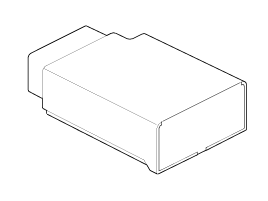 Kia Sportage: TPMS Receiver: Description and Operation
Kia Sportage: TPMS Receiver: Description and Operation
Third generation SL (2010ŌĆō2016) / Kia Sportage SL Service & Repair Manual / Suspension System / Tire Pressure Monitoring System / TPMS Receiver: Description and Operation
| Description |

| 1. |
Mode
|
| 2. |
Overview
|
| Operation |
| 1. |
General Function
|
| 2. |
General Conditions to Learn New Sensors:
|
| 3. |
General Conditions to Un-Learn a sensor that is removed:
|
 TPMS Sensor: Repair procedures
TPMS Sensor: Repair procedures
Removal
Tire Removal
1.
Deflate tire & remove balance weights.
Sensor can be unscrewed before unseat the tire bead.
ŌĆó
Th ...
 TPMS Receiver: Schematic Diagrams
TPMS Receiver: Schematic Diagrams
Schematic Diagrams
TPMS Receiver Circuit Diagram
Harness Connector
PinDescription1Battery2CAN_High3GND4-5-6-7IGN8CAN_Low9-10-11-12-
...
Other Information:
Side Airbag (SAB) Module: Description and Operation
Description
The Side Airbags (SAB) are installed inside the front seat
and protects the driver and passenger from danger when side crash
occurs. The SRSCM determines deployment of side airbag b ...
Illuminated ignition switch
Whenever a front door is opened, the ignition switch will illuminate for your
convenience, provided the ignition switch is not in the ON position. The light will
go off immediately when the igni ...
Categories
- Home
- Kia Sportage QL (2015-2019) Owners Manual
- Kia Sportage QL (2015-2019) Service Manual
- Kia Sportage SL 2010-2016 Owners Manual
- Kia Sportage SL 2010-2016 Service Manual
Copyright ® www.kispmanual.com 2014-2026
